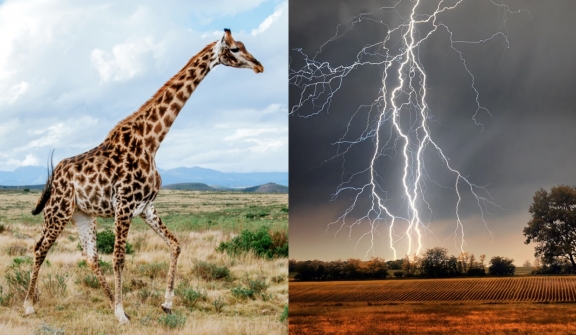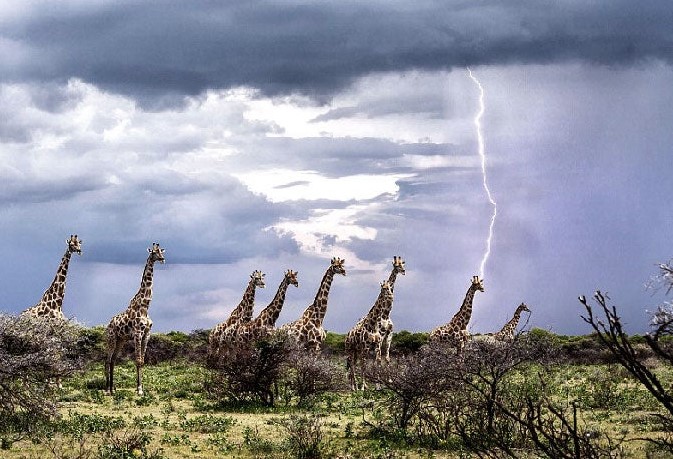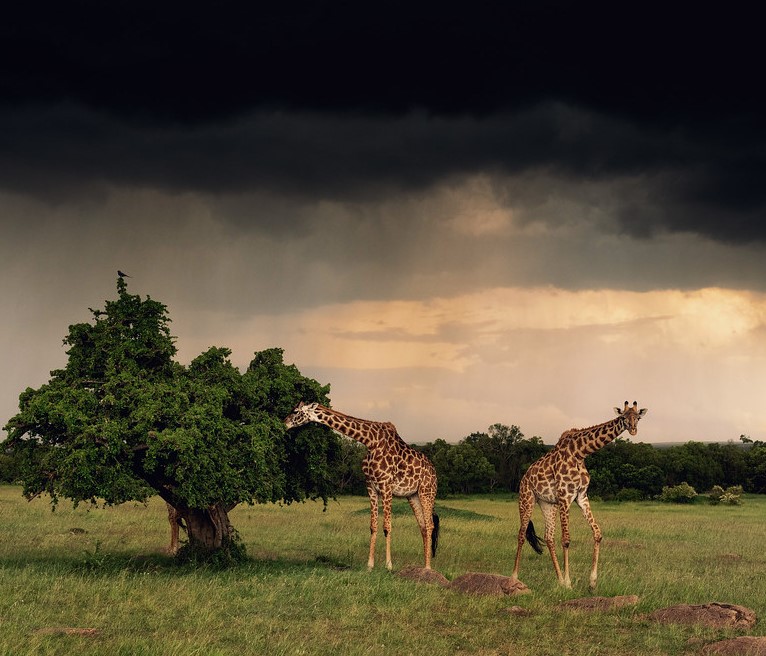
Between 1996 and 2010, only five well-documented cases were recorded, resulting in a mortality rate of approximately 0.003 deaths per thousand giraffes per year.

However, since there are only 140,000 of the species in the world at this time, this is thirty times higher than the corresponding human death rate.
Giraffes' towering stature plays a significant role in their increased vulnerability to lightning strikes.
Lightning bolts tend to target tall objects, especially in open areas, making giraffes potential lightning rods during thunderstorms.

The height advantage that allows them to reach tree foliage for feeding also puts them at a higher risk of fatal electrocution.
While there is limited research on giraffes' behavioral responses to thunderstorms, some observations suggest potential adaptations to reduce their susceptibility to lightning strikes.
Seeking shelter during a thunderstorm or swiftly moving to densely vegetated areas are potential strategies to mitigate the risk.

However, these behaviors have not been consistently confirmed through scientific studies.
In addition to the direct threat of lightning strikes, giraffes face another disadvantage compared to humans when it comes to thunderstorms.
As animals with four legs, they are more vulnerable to ground current—an electrical discharge that spreads along the ground after a lightning strike.

The spread of ground currents is facilitated by the extended leg structure of giraffes, making it easier for the electrical energy to travel through their bodies.
Ground current poses a significant risk, causing a considerable number of lightning-related deaths and injuries in both animals and humans.




